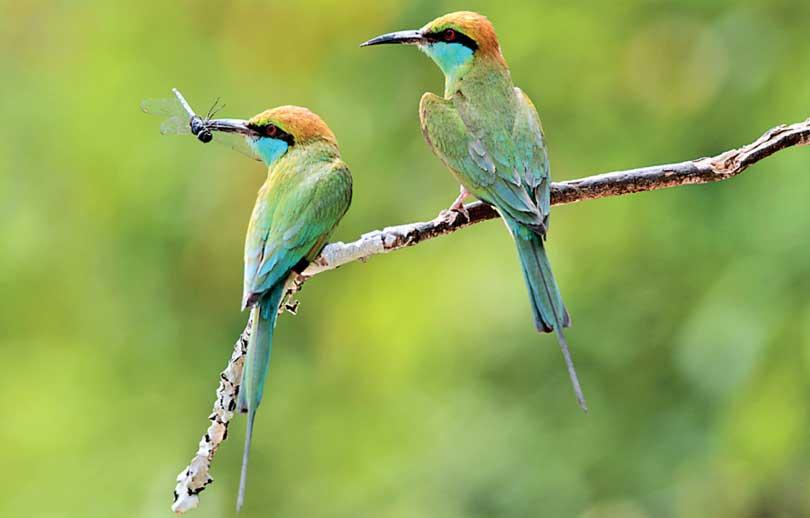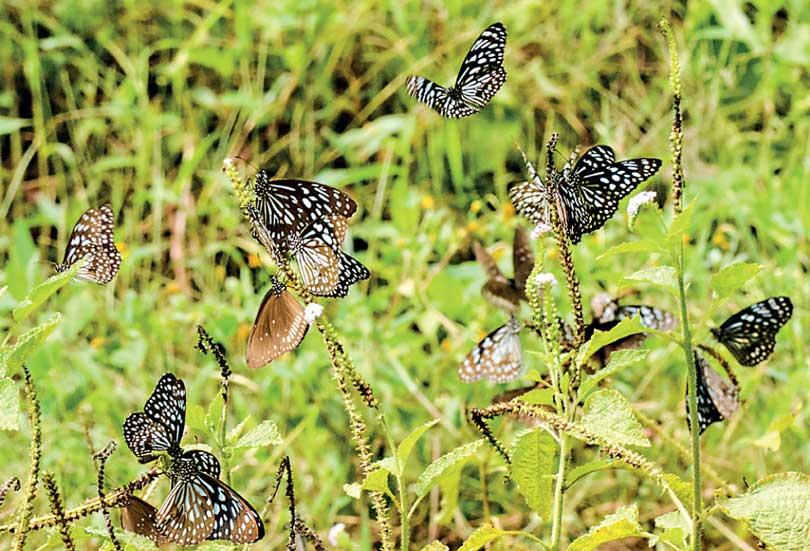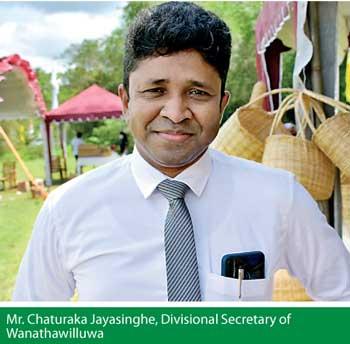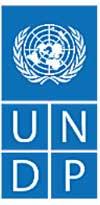Reply To:
Name - Reply Comment


Human activity continues to put immense pressure on the planet, leading to crises like COVID-19, climate change and mass extinctions becoming more evident. Business as usual is not an option anymore. It has become vital that we work with - and not against nature. As an island nation rich in biodiversity, Sri Lanka has a part to play in ensuring that human development is not made at the cost of heavy environmental damage including biodiversity loss.
The name Wewalkale doesn’t immediately ring a bell for many. However, as a known secret among locals in the area, the Wewalkale Environmentally Sensitive Area (ESA) is an extremely rich biodiversity hotspot in the beautiful island of Sri Lanka.
Administratively listed under the Wanathawilluwa Divisional Secretariat, Wewalkele ESA is situated in the North Western Dry Zone of Sri Lanka. Many factors make the Wewalkele ESA both ecologically and socio-economically important.
The area is blessed with about 345 species of flora and fauna including mammals, amphibians, reptiles, birds and insects like butterflies and dragonflies. 16 of these species are identified as nationally threatened species of which 6 are endangered, and 10 are vulnerable species. Further, 16 more species are listed as endemic, while another group of sixteen 16 comes under the near threatened category according to the International Union for Conservation of Nature (IUCN) conservation status, highlighting the greater need for biodiversity protection, before it’s too late.
Environmentally Sensitive Areas such as this have been the prime focus of a five-year pilot project, jointly funded by the Global Environmental Facility (GEF) and the Government of Sri Lanka with technical and operational support of UNDP to improve the capacity of the country to manage such hidden treasures. The project is implemented by the Ministry of Environment in the North Central and North Western Provinces in the Kala Oya Basin within the Kekirawa, Ipalogama, Palagala, Galnewa, Wanathavilluwa and Karuwalagaswewa Divisional Secretariat Divisions.
Wewalkele is predominantly a marshy habitat with dominant mangrove associates and Calamus. Several habitat types can be encountered in Wewalkele including marshy habitat, scrub forests, a riverine forest, a lotic aquatic habitat and associate grasslands.
Amidst the 125 species of flora, cane plants also known as ‘Heen Wewal’ (Calamus) are located in muddy groves and grow to be quite tall, dense and extremely thorny. People from the surrounding villages harvest Heen Wewal from Wewalkele, to make handicraft items that often supplement their household incomes.
 40-year-old D.Yoganadan, the sole breadwinner of a family of four notes that, “cutting down cane in the forest is an arduous and risky business, but we endure these hardships as this is our only means of livelihood”.
40-year-old D.Yoganadan, the sole breadwinner of a family of four notes that, “cutting down cane in the forest is an arduous and risky business, but we endure these hardships as this is our only means of livelihood”.
Wewelkele also promises high untapped eco-tourism potential, with the possibilities of promoting the area among ardent birdwatchers from around the country and beyond, who have the opportunity to observe a diverse collection of resident and migrant birds in lake habitats.
Wewalkele is home to five endemic species, two near-threatened species, and three migrant birds were recorded. It has been noted that aquatic habitats related to Nelum Wewa and dense vegetation associated with the marshy area provide refuges for these birds. Moreover, Nelum Weva and other tributaries in the ESA increase the water retention capacity of the area, as it has a direct effect on water security and the water requirement for agricultural crops cultivated therein.
Threats to the ESA
While the Wewelkele ESA enjoys these benefits brought by its rich biological diversity, it also faces significant threats, mainly caused by development pressure.
Land encroachment is a major threat observed in the Wewelkele ESA. The extents of coconut plantations and other crops continue to expand and invade the major forest habitats. In addition to this, traditional chena cultivation and the collection of wood for various purposes including firewood also pose challenges to forest habitats. Adding to this, Project Director of the ESA Project, Ms. Kulani H.W. Karunaratne stated that, “land encroachments with coconut plantations and other various purposes could be a severe threat to the habitat of these threatened species living in this ESA. On the other hand, the encroachment of natural habitats also increases the number of human-wildlife conflicts.”
Several invasive plants such as Podi singno maran/ Lokkannattan (Chromolaena odorata) and Ipil Ipil (Leucaena leucocephala), that have been observed in the marshy lands of Wewelkele, add to the threats posed to the ESA. Currently, their invasion stage is still at a primary level, while their patch-wise distribution is evident. Hence, management options being considered against plant invasions are still applicable in the termination of the spread of the present types of invasive species. However, in order to achieve this, stakeholders in the area have had to come together, to act fast before its too late. Chaturaka Jayasinghe, Divisional Secretary of Wanathawilluwa stressed that, “biodiversity integrated land use planning, with the participation of civil society organisations and the promotion of wise use [of natural resources] with the aim of sustainable development will benefit the environment, while guaranteeing that people would ensure the long-term conservation of the ESA.”
Wewelkele is home to several remarkable animal species Fish such as the Thambalaya (Labeo lankae), the Leopard (Panthera pardus), the Fishing cat (Prionailurus viverrinus), the Elephant (Elephas maximus) and the Eurasian otter (Lutra lutra). However, the survival of the Fishing Cat largely depends on the protection of their unique habitats, namely the marshy and the riverine habitat types.
Poaching is currently not a prominent issue in Wewalkele. However, considering the scale of developmental pressures, the sad truth remains that it is only a matter of time before it is assumed that poaching would soon also be another threat to this pristine ESA.
The Project Story of Wewelkele ESA
 Recognizing the role played by the Wewelkele area in terms of its biodiversity and sustenance of ecosystem services, and considering the potential threats to the ESA, the Wanathavilluwa Divisional Secretariat (DS) and its community members joined hands to safeguard the area. Starting 2018, the project focused on eight key areas including establishing boundaries around Wewalkele, conducting an assessment to define the biodiversity richness of Wewelkele, creating awareness among the community members and defining the Wewalkele Co-Management Plan to manage the ESA.
Recognizing the role played by the Wewelkele area in terms of its biodiversity and sustenance of ecosystem services, and considering the potential threats to the ESA, the Wanathavilluwa Divisional Secretariat (DS) and its community members joined hands to safeguard the area. Starting 2018, the project focused on eight key areas including establishing boundaries around Wewalkele, conducting an assessment to define the biodiversity richness of Wewelkele, creating awareness among the community members and defining the Wewalkele Co-Management Plan to manage the ESA.
We need to reinvent our economies to be able to develop with nature and to be able to invest in nature.
Wewalkele today
As a first step, the IUCN assessed the biodiversity of the Wewelkele ESA by way of a Rapid Biodiversity Assessment and its biodiversity profile was developed. Next, using a participatory approach to the project development process, threat mitigation measures were identified. The ESA was surveyed and both socially and physically demarcated to ensure that its conservation targets were met. With the aim of leaving no one behind, the project focused on incentivizing the surrounding community to conserve the ESA while sustaining the economic benefits derived from it by transforming their existing natural resource usage to green jobs. Despite the natural growth of cane and decades-old craftsmanship in Ralmaduwa, there are no shops that sell cane goods in the village.
Living in the village of Wewalkele, the only income 29-year-old Subadra Sandamali’s family received was her husband’s unstable job working as a mason. “We now possess the skills and the necessary resources to craft the items that are in demand, but we do not have a market or channels to sell our products”, said. Subadra Sandamali, a 29 year-old mother of a 6-year old. Living in the village of Wewalkele, the only income Subadra’s family received was her husband’s unstable job working as a mason.
Through the intervention of the project, the community was provided with knowledge and skills, facilitating stable market linkages and ultimately helping to promote the cane industry further. To ensure the sustainability of the community livelihoods, the project has also set up cane nurseries along with the required replanting facilities.
To add synergy, a national event was held at the Wewelkele ESA site on 22 January 2021, with the patronage of the State Ministry of Cane, Brass, Clay, Furniture and Rural Industry Promotion, to mark the setting up of the country’s first Shilpa Sabha (Crafts Council). The Shilpa Sabha is expected to engage with and lead the community towards uplifting the community and adding to their economic independence. It is anticipated that this venture would further enhance the sustainability of livelihoods in the Wewelkele ESA. With additional training from the Shilpa Sabha on new and innovative cane products, the members of the community-based organizations regularly earn around 30,000 rupees a month from their cane products. The effort put into replanting trials and nurseries of the cane species native to the ESA are also paying off. With the support of the Extension Officer of Department of Agriculture, the community has witnessed success in their replanting trials and are working on ensuring that the eco-system will continue to flourish alongside their livelihoods in the long-run.
We are part of the solution #For Nature
 Biodiversity remains the answer to several sustainable development challenges. From nature-based solutions to climate, health issues, food and water security, and sustainable livelihoods, biodiversity is the foundation upon which we can build back better.
Biodiversity remains the answer to several sustainable development challenges. From nature-based solutions to climate, health issues, food and water security, and sustainable livelihoods, biodiversity is the foundation upon which we can build back better.
As a source of rich biodiversity, protection of the Wewalkelaya ESA is of utmost importance. The combination of developmental pressure together with land encroachment, detection of invasive plant species and the looming threat of poaching need to be addressed to ensure the longevity of the Wewelkelaya ESA. Strong partnerships with local government bodies like the DS, oversight of the LMC and the support given by the larger community are the secret of the success behind managing the ESA. Natural habitats, biodiversity and communities can co-exist, benefit each other, be protected and thrive if we all work together - the Wewalkelaya ESA is evidence of this feat!
Cutting down cane in the forest is an arduous and risky business, but we endure these hardships as this is our only means of livelihood